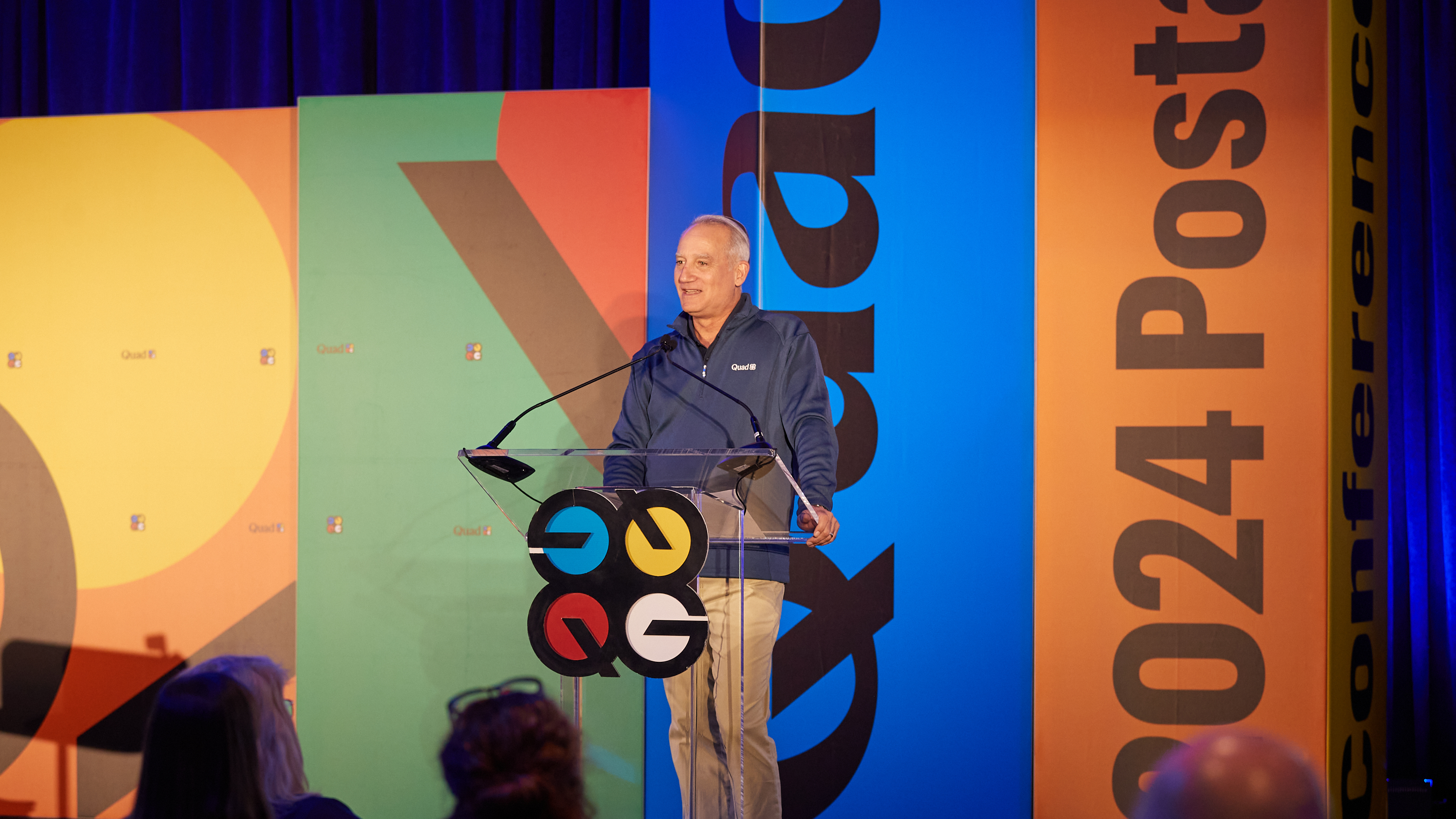Brands, publishers, non-profits and other organizations that depend on mail to reach new and existing customers have come to a crossroads in their efforts to adapt to relentless twice-a-year U.S. Postal Service rate hikes.
One path involves continuing to express frustration at the difficulties caused by the rate hikes and focus on the “same old, same old” of cutting page counts, frequency, paper sizes and circulation. “You can get mad about it,” says Jeff Henke, Executive Director of Postal Solutions at Quad, “but this is the world we live in.”
The other, more productive path, Henke told attendees at the 23rd Quad Postal Conference: Focus your energies on adopting new techniques for optimizing the use of mail, both to save money and improve marketing effectiveness.
“We have to react faster,” Henke told an audience that included representatives of some of the nation’s largest Postal Service customers. “We have to try new things… With yet another increase on the way, there’s no time to wait on the sidelines.”
More than 60 executives from across the country attended the March 12-14 conference, held in Milwaukee at The Westin Milwaukee hotel.
A renewed call to action for large mailers
Some eye-watering context: Compared to January 2021, commercial businesses today are paying 38% more to mail marketing letters and 58% more for catalogs, while non-profit catalog mailing costs have surged 71%.
The traditional ways of adapting to cost increases, which the Postal Service says are driven by inflation and a years-long modernization effort, include reducing mailing frequency, cutting circulation and page counts and switching to less expensive paper. But with the Postal Service signaling that it intends to continue with twice-yearly increases, those methods alone may no longer provide sufficient offsets.
On April 9, the Postal Service filed notice with the Postal Regulatory Commission of its plans for the year’s second rate increase. “These price adjustments are needed to achieve the financial stability sought by the organization’s Delivering for America 10-year plan,” the Postal Service said in a press release.
Enter Quad, which works with thousands of brands to plan, print, send and optimize direct mail, catalogs, magazines and other forms of ink-on-paper materials to millions of U.S. households and has a long history of identifying and testing new programs aimed at optimizing their performance in the marketplace.
Henke added that it’s important to keep mail as a viable channel for marketers, citing studies that show that an estimated 80% of consumers act on printed mail, and that 74% of marketers believe direct mail provides the best ROI of any channel. “We’re all in this room because we know mail works,” Henke told Quad Postal Conference attendees.
Quad unveils Household Fusion
A new Quad program announced at the conference represents an emerging opportunity to strategically control costs. Called Household Fusion, it aims to gather different pieces of mail sent to the same address into a single package — a recyclable polybag — for delivery to the home at a lower cost.
Under the program, which is currently being tested by multiple Quad partners, mail is optimized at an address level into a single package with a single cost, which is shared among participants.
Household Fusion is the latest addition to Quad’s broader portfolio of data-driven postal optimization solutions, and customers should focus on using every tool they can, Henke told conference attendees.
“What we’re doing is offering ways to gather more data to help offset these recurring postal price increases, so you can produce better marketing,” Henke said. “While we don’t have a single solution that can save you 60%, what we do have are incremental solutions that together can help save you a lot of money. And we know we have to keep innovating.”
Rallying mailers to educate lawmakers
Quad extended its call to action beyond optimization to ask for help in shaping U.S. Postal Service policy with lawmakers and other leaders in Washington. Commercial mailing alone is a $1.9 trillion industry that supports 7.9 million jobs, Quad CEO, Chairman and President Joel Quadracci told conference attendees. Those setting policy need to hear first-hand of the impact of continued price increases on the ability of businesses to connect with customers and generate growth, he added.
“The Postal Service Board of Governors has to be properly educated on what’s going on,” Quadracci said. “We’re working on that, and we need your help. We may be asking you and your employees to sign onto letters to Congress, because they need to know this is killing a very important part of commerce.”
Quad has been working with U.S. Senators Tammy Baldwin of Wisconsin and Susan Collins of Maine to develop and distribute a letter to other lawmakers, as well as the USPS Board of Governors, highlighting the industry’s concerns.
The big picture for marketers
Adopting new optimization techniques and educating public policymakers are necessary steps, but the real solution for marketers involves leveraging advanced data-processing techniques across the board, as part of an omnichannel strategy, to create more successful marketing campaigns, Quadracci told Quad Postal Conference attendees.
“You have to get more efficient in your marketing spend and make it more responsive across all channels,” he said. “And Quad can help. We understand data, we understand the response rates — and we understand integration of all the channels.”



